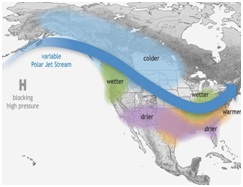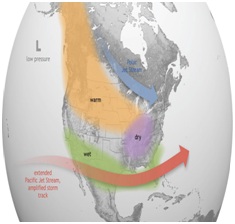

Context
As per the update from NOAA’s Climate Prediction Center, it appears a La Niña has developed for the second year in a row. The latest La Nina is expected to last through the early spring of 2022 (February).
What is Double-dip?
- Two La Ninas happening one after the other (with a transition through ENSO neutral conditions in between) is not uncommon.
- It is usually referred to as a ‘double-dip’. In 2020, La Nina developed during the month of August and then dissipated in April 2021 as ENSO-neutral conditions returned.
|
Previous La Ninas occurred during the winter of 2020-2021 and 2017-2018. An El Nino developed in 2018-2019. |
Understanding the geographic phenomenon
- La Nina (means ‘little girl’ in Spanish) is a natural ocean-atmospheric phenomenon.
- It is marked by cooler-than-average sea surface temperatures across the central and eastern Pacific Ocean near the equator.
- El Nino: It is the opposite of El Nino(meaning ‘little boy’), that is marked by warmer-than-average sea surface temperatures across the central and eastern Pacific Ocean near the equator.
|
|
La Nina (Little Girl) |
El Nino (Little Boy) |
|
Precipitation |
La Nina causes an increase in precipitation. It also causes formation of low-pressure areas. |
El Nino usually causes a decrease in precipitation and has been found to cause drought-like conditions in India. |
|
Wind strength |
Trade winds are even stronger than usual, pushing more warm water toward Asia. |
Trade winds weaken. Warm water is pushed back east, toward the west coast of the Americas. |
|
El Nino Southern Oscillation (ENSO) cycle
|
A part of the El Nino Southern Oscillation (ENSO) cycle.
|
A part of the El Nino Southern Oscillation (ENSO) cycle.
|
|
|
 |
 |
*ENSO is characterized by opposing warm and cool phases of oceanic and atmospheric conditions in the tropical Pacific Ocean.



